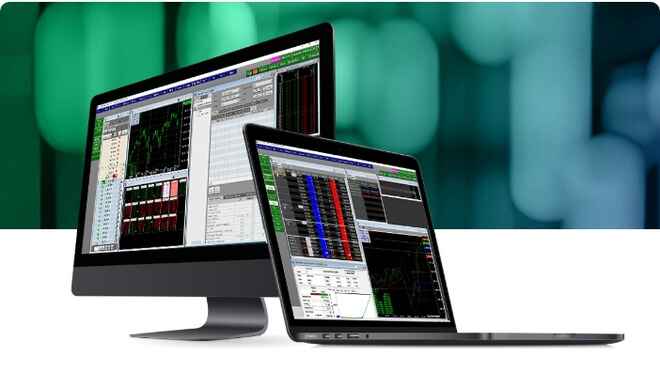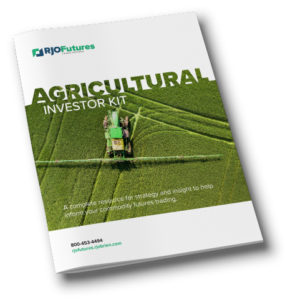The price of global commodities can swing significantly based on factors such as weather, insect infestations, war or economic disruption and changing buyer needs. These price fluctuations create opportunities for traders, who can capitalize on price shifts via commodities futures contracts. Let’s take a closer look at one popular segment of the commodities market: Grain futures.
What Are Grain Futures?
Grains are agricultural commodities such as corn, soybeans and wheat. Grain futures are legally binding contacts for the delivery of a particular grain for a specified price at some point in the future. These contracts are standardized trading products that are traded on exchanges. One key feature of grain futures is that they allow farmers to lock in prices before harvest.
There are generally two reasons to deal in grain futures. First, a trader may wish to make an outsized profit by correctly predicting grain price movement, much as a stock trader makes a profit by correctly predicting that his equity will increase in value. If a trader takes a long position on wheat – and a supply disruption causes the price of wheat bushels to rise significantly – that trader can benefit from the shift. Second, someone may wish to trade grain futures as a hedge against an existing position, or to mitigate risk associated with future commodity availability or price swings. Traders should remember to exit their positions before the delivery date, or they may unwittingly take physical possession of the commodities.
What Is the Most Traded Grain?
The most traded grains include:
- Corn
- Soybeans
- Wheat
- Oats
- Soybean oil
- Soymeal
- Rice
Traditionally, corn is the grain with the highest trading volume. Volatility can differ based on the type of grain (wheat is highly volatile) and position limits, volume, ranges, contract sizes and pricing structures can all vary depending on the grain in question.
How to Trade Grain Futures
Grain futures can be traded via the Chicago Board of Trade (CBOT). Traders simply purchase contracts for one of the seven grains listed above. Trading futures contracts allows for more leverage than trading the actual commodity. For example, one futures contract for soybeans represents 5,000 bushels. Traders can control larger positions with less capital. Grain futures also have lower margins than other commodities (due to contracts being lower in total dollar amount) and they have straightforward trading dynamics based on commonly understood factors that influence supply and demand.
How to Read Grain Futures
Grain prices on futures charts can seem complex at first. However, reading prices is fairly straightforward. Common indicators include:
Last: The most current trade price.
Change: The difference between current price and previous settlement price.
Open: The price at which the grain opened.
High: The highest trading price of the day.
Low: The lowest trading price of the day.
Previous: The settlement price for yesterday.
Volume: The number of contracts traded today.
Contracts are listed by the first two letters on the commodity, followed by a third letter indicating a month and finally a year.
Understanding Basis and Grain Futures Forecast
Traders should also be cognizant of the concept of basis, which is the difference between the price of a commodity in a local market subtracted from the price of the same commodity in the futures market. For example, if corn is trading at $5 a bushel in Nebraska on a given day, and the futures price is $5.50, the basis is $0.50.
If the basis in a local market is negative, that means supply is heavy in that market. If numerous key grain markets have a negative basis, this may be a broad indicator of a change in futures prices. This is one reason why many traders monitor basis levels in key commodities markets, as it can often forecast looming price shifts.
How Are Grain Futures Prices Determined?
Prices are determined by the size of the contract and the price of the grain. For example, if a soybean futures contract allows the trader to control 5,000 bushels, and bushels are trading at $6 each, the dollar value of the contract is $30,000. Traders must pay a maintenance margin to control this contract. Based on current margin rules, this would currently fall in the $2,500 range.
When Do Grain Futures Trade?
Futures contracts trading periods are exchange-dependent, but traditionally trade Sunday through Friday from 8:30 a.m. to 1:20 p.m., and then again from 7 p.m. to 7:45 a.m.
What Is the Price of Grain Futures?
The price of grain futures contracts depends on the type of grain being traded. Corn, for example, is priced in cents-per-bushel with contract sizes of 5,000 per bushel. Tick size for corn is one-quarter cent per bushel, for a contract size of $12.50. Wheat, on the other hand, is priced at one-eighth cent per bushel, for a $6.25 contract size.
How RJO Can Help You Invest in Grain Futures
RJO Futures can offer you an unrivaled combination of personal guidance from commodities experts, cutting-edge trading tools and a library of actionable information. If you’re curious about how to buy grain futures, we urge you to reach out to RJO Futures to learn more about how we can help you set the table for success through personalized assistance.
Learn about hedging futures in RJO University.



